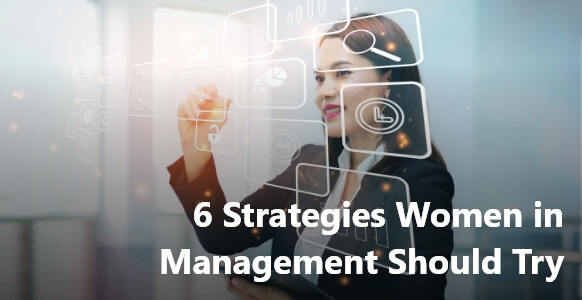Last updated: 26 August 2020

To say that lockdown has been a challenge for businesses is an understatement. While many businesses are concerned about the financial setbacks, the emotional impact of COVID-19 the workplace has also been a very serious – yet less discussed, issue.
It is well understood that leaders and especially entrepreneurs are particularly at risk of depression, anxiety, and even suicide.
The impact of lockdown on mental health cannot be overstated. According to Mental Health America, throughout the populace, anxiety is up by 370%, and depression screenings are up by 394% since the period prior to the pandemic.
The good news is there are some simple self-care techniques to counteract the detrimental effects of lockdown.
In this article, you will find 4 tried and tested practices that you can easily insert into your day to minimize the emotional impact of COVID-19 in the workplace.
First, let’s check out the recent facts and data to get clear on how the pandemic is affecting the bigger picture.
The Emotional Impact of COVID-19: Coronavirus and Mental Health
Both anxiety and depression have increased massively due to the COVID-19 pandemic. In fact, the U.S. Census Bureau reports that one-third of Americans now show signs of clinical depression.
And according to top psychiatrists at Massachusetts General Hospital, reported in Inc.com these numbers are “becoming amplified during the recent pandemic.”
This isn’t just down to concern about the virus itself.
A Chinese study has shown that an increase in anxiety and negative emotions were caused as much by the practical measures put in place to minimize the spread of the virus, such as isolation and social distancing, as by the fear of the virus itself.
Fundamentally, human beings are social creatures, so it may come as no surprise that limiting social contact and relationships has a negative impact.
There is a vast amount of research showing conclusively that social relationships are vital to mental health and overall wellbeing.
The stats now coming out of the COVID-19 pandemic clearly demonstrate how the effects of isolation and distance are taking their toll.
The Emotional Impact Of COVID-19 On Leaders and Entrepreneurs
As an entrepreneur, business owner or leader, the effects on mental health can be all the more pronounced.
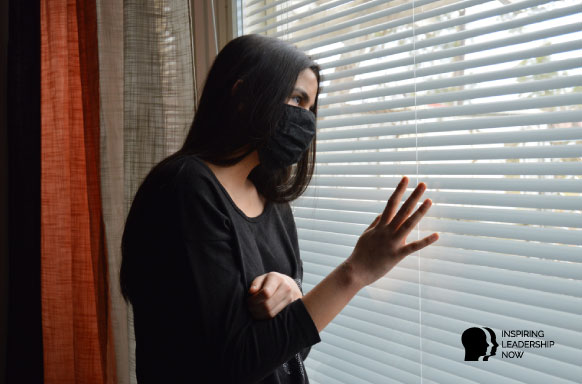
In the Forbes article Entrepreneurs and Suicide, A New Perspective On Entrapment Gives Hope, Prudy Gourguechon says that social isolation is a risk factor for suicide – which is something that CEOs, leaders and particularly entrepreneurs frequently report.
She goes on to say that the biggest predictor of suicide may not be thoughts of suicide, or depression, but the feeling of being trapped.
Owing to the often solitary nature of entrepreneurship, an increased sense of isolation can lead to an increase in feeling entrapped – leaving entrepreneurs highly susceptible.
Although there isn’t yet reliable data that compares the risk of suicide among entrepreneurs with other comparable high achievers, common sense does seem to suggest a link.
A “high-stress life, enormous uncertainty, exhaustion and risk of humiliation that every entrepreneur endures, makes a case for increased caution” writes Gourguechon.
The emotional impact of COVID-19 on businesses and leaders is not only limited to stress about the health risks of the pandemic, but also at how it could destroy their enterprises. There is a real threat of massive profit losses, ruining dreams, and changing lives forever.
For others, it’s the enormous uncertainty that COVID presents that has led to anxiety or depression.
In order to feel relaxed, the conscious mind must find safety and certainty, without it stress levels soar. The result of the pandemic changing the world in unprecedented ways has an impact: from mild irritation to severe anxiety, and worse.
If rampant stress and high anxiety levels are left unchecked, they present clear dangers in the workplace.
You might already be familiar with the symptoms: burnout, disengagement, unhappiness, lack of productivity, a rise in sick leave and mental-health-related absences.
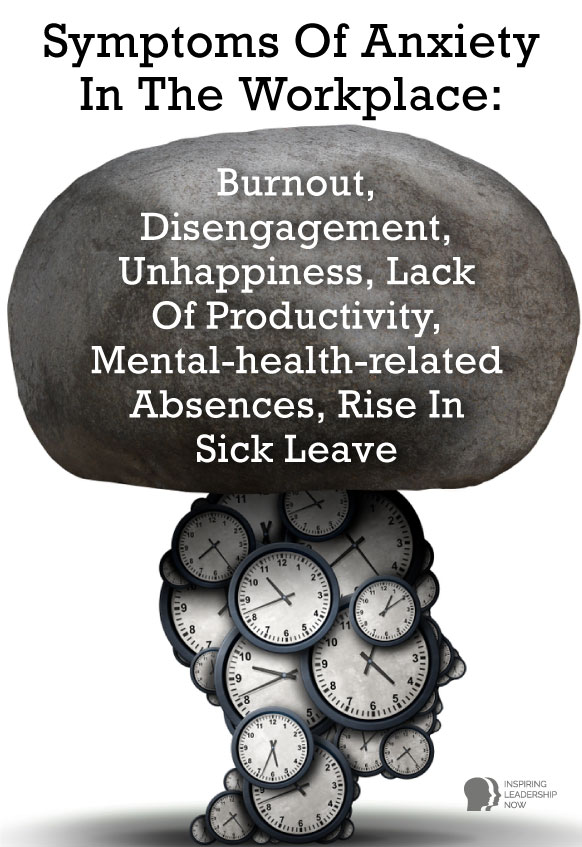
Mental Health In The Workplace
Mental health still is a taboo topic in many organizations. What this means is that individuals within them are less likely to talk about their suffering.
And don’t know about, or how to access support structures such as counseling, coaching, skills development, or mentorship to help with mental health and self-development.
Historically, men, in particular, are prone to suffer in silence. Most cultures still don’t allow men to be open about their emotions. Rather than being seen as a courageous act of vulnerability, opening up has been mislabeled as “weak.”
This means that men, in particular, don’t feel safe to admit something doesn’t feel right and have a really hard time asking for help.
Without being able to call out a feeling of being completely overwhelmed there is nowhere to go. So the danger is for men, or women, in high-level positions, especially at C-level and for entrepreneurs, is to push on and not ask for help, nor support themselves with self-care.
It’s not just business leaders and CEOs that are affected by the emotional impact of COVID-19; super busy and stressed entrepreneurs are also likely to be suffering. Especially if you’re running a business solo, or business is struggling, you’ll be doing everything in your power to keep things going.
Not only is this in itself exceedingly stressful and isolating – dangers in themselves as you now know – there is also the additional factor that by pulling out all the stops the entrepreneurs amongst you might not be taking the breaks you need.
This mounting anxiety coupled with an increasing sense of isolation is a recipe for disaster – personally and professionally, for men and for women equally.
How Stress Affects Your Business
Rising levels of anxiety and depression not only impact the individuals affected but also your coworkers, and additionally will affect your businesses’ overall performance.
- If you are stressed, depressed, or anxious, you are not in a resourceful state. In an anxious state, you will have a high level of stress hormones coursing through your body. This shuts down your ability to be rational, calm, and analytical, making considered decisions impossible.
Instead, you are in “fight or flight” mode, where your body and mind are primed to come in swinging, or get the hell out of there. Obviously, this is not a state of resourcefulness, on any level (unless you are in immediate danger, in which case, yes run!). - If you, or your team, carry on highly stressed and un-resourceful, your business is going to suffer. Rushed or knee-jerk reactions will be made in favor of balanced and well-considered decisions.
- Client rapport will be unfavorably affected, and interpersonal work relationships will deteriorate. Morale will slide, leading to greater disengagement, further absences, and more anxiety. Fortunately, help is at hand – because there are no such things as un-resourceful people, just unresourceful states. And states can be changed!
>> Related Article: Crisis Leadership In Lockdown & Beyond: How To Support Your Team To Deal With Change
The Solution: The Importance of Self-Care for Leaders and Entrepreneurs – Lockdown and Beyond
To lower stress and calming anxiety, self-care is the solution. And it’s easier than you think. Forget retreating to chant mantras on a mountainside (although go for it, if you can get to a mountain!).
These are 4 tied and tested techniques that can be successfully integrated into your working day and incorporated as your downtime.
1. The “45-Minute Rule”

In the recent Inc.com article Want to Beat Anxiety and Feel Better Now? Follow the ’45-Minute Rule’, Bill Murphy Jr. cites a new Chinese study that has found exercise is key for lowering anxiety and depression.
Detailed in a research published in the International Journal of Environmental Research and Public Health, the researchers gathered data on the participant’s level of physical activity. As well as negative emotions, sleep quality, and aggressiveness.
The research clearly showed that negative emotions were markedly less prevalent when participants engaged in “45 minutes of vigorous physical activity every day.”
The study notes that similar effects were found with just less than two hours of light physical activity (108 minutes) daily, or an hour and twenty (80 minutes) of moderate activity per day.
So, a quick 45-minute blast of exercise per day is proved to help alleviate a negative state. Because according to the study authors: “People need additional [physical activity] to offset the psychological burden and negative emotions caused by the disease outbreak and social distancing.”
Time to dust off your running shoes, or cycle to work. Or if you’re working from home, fake it, go for a cycle, brisk walk or jog before you log in or switch on. It is also worth noting that housework counts as moderate activity.
So busting your household chores is a double whammy – clean home and happy you. Good times!
2. Meditative Breathing Technique
This is a yogic practice that brings gentle awareness onto the breath and body. It works to lower anxiety levels by calming your body’s stress responses, and in place boosting relaxation.
This technique can be done either sitting (ideally with your head and neck supported) or lying down with your spine straight. Ideally, you would close your eyes, or perhaps bring a soft focus to your gaze if you prefer.
Here’s a step-by-step guide to a simple meditative breathing technique:
1. Close your eyes. Let your eyelids relax.
2. Bring your awareness to your breath.
Notice your breathing, and the sensation of your breath in your nostrils…the gentle rise and fall of your chest or belly.
3. Start to invite your breath to become a little bit longer, or deeper.
4. After 3 longer or deeper breaths, bring your hands to rest on your lower abdomen.
5. As you breathe, notice your belly rise as you inhale, and relax as you exhale. Take 3 breaths with your hands on your belly.
6. Next, bring your hands and your awareness up to your side ribs.
Let the hands rest on your ribs and for 3 breaths, notice your belly and ribs rise as you inhale and relax as you exhale.
7. Now, softly bring your hands and your awareness up to your chest.
Let your hands rest on your upper chest, and in 3 breaths, notice your belly, ribs, and chest rise as you inhale, and relax as you exhale.
8. After 3 breaths, gently bring your hands to rest gently in your lap or by your sides and continue to breathe; filling your belly, ribs, and chest as you inhale, and your belly, ribs, and chest relax as you exhale.
9. Stay with your breath awareness for a minimum of 5 breaths. If it feels good, stay for as many minutes as you want.
10. When you are ready to come back, start to notice the points of contact between your body and the chair or the surface beneath you, start bringing your attention slowly back into the room, noticing any sounds or sensations.
11. Slowly move your fingers and toes.
12. When you are ready, gently open your eyes.
3. NLP State Awareness Technique– The Two Minute Vacation
Neuro-linguistic programming (NLP) looks at the structure of human experience, rather than the content. It works on the premise that you create your own state, and that state elicits certain feelings. This technique can help in alleviating the emotional impact of COVID-19 wherever you are.
When you want to change something usually you want to change one or both of two things: how you feel, your state. And how you behave, which is a result of how you feel.
It is possible to change state and therefore how you feel, by changing your internal representations of certain things.
By specifically changing the way you represent things will empower you to feel and produce the behaviors that support you in attaining your goals, whatever they are.
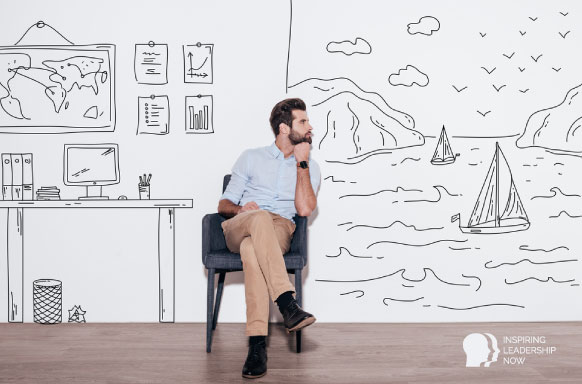
This technique allows you to do that, it is adapted from Anthony Robbins book Unlimited Power: The New Science of Personal Achievement:
1. Close your eyes and think of a very pleasant memory, either recent or distant. Relax into that memory.
2. Notice the image: any color, black and white, blurry or fuzzy, distant or near, framed or panoramic, moving or still, 3D or flat, are you in or out of the picture?
3. Now notice any sounds: any voices or internal dialogue, sounds of nature. Notice the quality of those sounds.
4. Next, take your attention to how you feel, notice any sensations in your body, physical and emotional, notice all the pleasant sensations that are surrounding you.
5. Now take your image and make it brighter, bring it closer, making the image clearer and sharper.
6. Take the sounds and turn them up, make them stronger, more affirmative.
7. And now the sensations; increase them and turn up the feel-good factor.
8. Notice what happens when you change the intensity of the image, the sounds, and the sensations.
9. When you are ready, open your eyes.
10. For the majority of people, making an already pleasant memory brighter, closer and bigger, with stronger sound and a more visceral feeling of pleasure increases the power and pleasure of the internal representation.
Play with the image to get familiar with how to intensify your feel-good state.
11. Go back to your turned-up pleasant memory whenever you need to.
In your mind’s eye see what you see, hear what you hear, and allow yourself to feel all those pleasant sensations washing over you. Like a delicious two-minute vacation.
4. The NLP Two-Minute Therapy Session
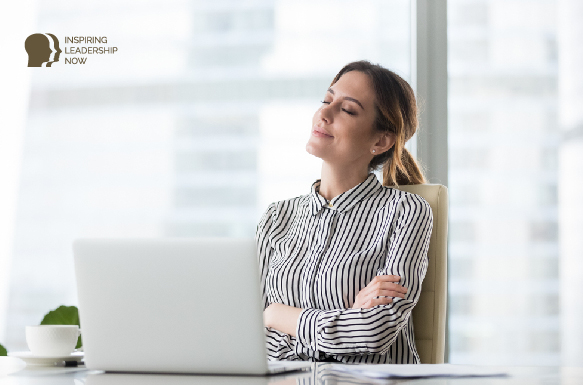
Now try the same thing with a negative image. Using this technique you can take something that has caused you great suffering or anxiety in the past and make it impotent, make it dissolve and disappear:
1. Think of something that upset you or caused you pain or anxiety.
2. Using all the modalities as above, see it, hear it and feel it – notice all those things as before.
3. This time make the image smaller and further away, shrink it right down; take out the color if there is any, make it fuzzy or blurred.
4. Move the scene away from you, push it far away so that you barely see it, and finally push it all the way back into an imaginary sun and watch it disappear from the world.
5. Next, turn down the volume; take all the sounds, and make them softer.
6. Take your feelings and sensations and allow them to dissolve away from you, make them wispy and insubstantial.
7. Check out how you feel having just dissolved the image and taken all the intensity out of it.
8. Notice how you feel and what happens to the negative image when you go through this process. You might be aware that the image loses its power, it might become less potent or painful, or perhaps disappear altogether.
9. When you feel ready, open your eyes.
“There is nothing either good or bad, but thinking makes it so”
– William Shakespeare
The COVID-19 pandemic has had a domino effect on many economies and businesses around the world in recent months.
Public health measures such as social distancing and community quarantines have been really stressful. Not to mention the shift of some businesses transitioning from an office set up to working remotely.
Strong feelings such as anxiety and fear of the unknown can be very overwhelming for every individual, especially for business leaders which might lead to more serious mental health problems.
To help you manage the emotional impact of COVID-19, try the 4 self-care practices in this article to alleviate any associated stress and anxiety.

